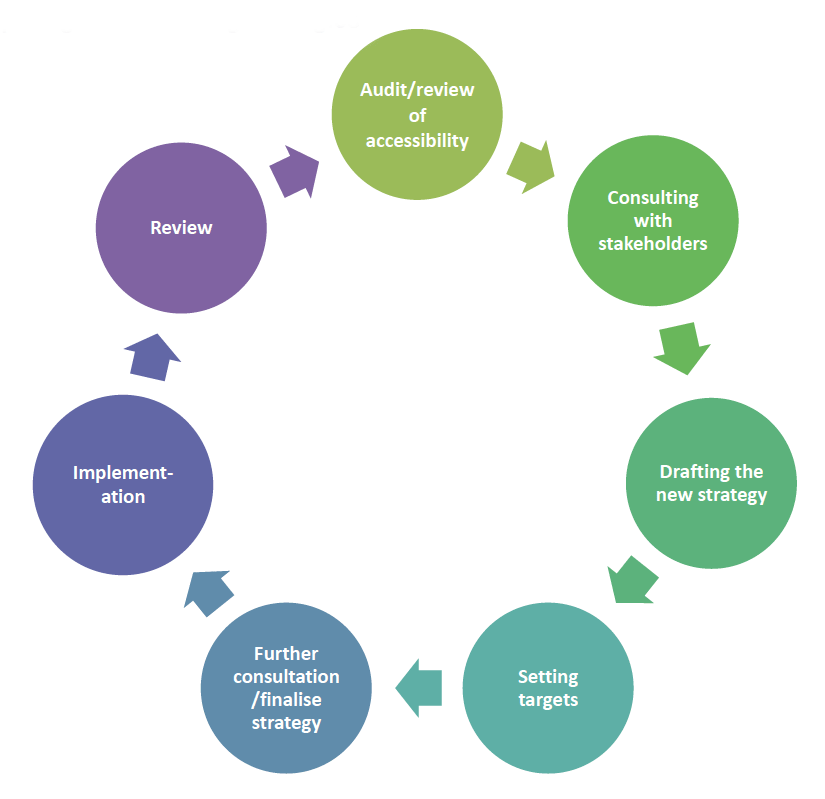Planning improvements for disabled pupils' access to education: guidance for education authorities, independent and grant-aided schools
Guidance to support responsible bodies in the development and maintenance of accessibility strategies.
Appendix G Preparing and reviewing strategies

The steps above form the cycle of Accessibility Strategy development and implementation, the actions suggested for each steps are set out below.
Audit/Review of accessibility - review the outcomes of the previous strategy, identify strengths, and where there are gaps and improvements needed.
Consulting with stakeholders - consult with a broad cross-section of service providers, users and third sector organisations.
Draft the new strategy - focus on outcomes; suggested improvements as a result of strategies may be ranked as:
- short - addressed within 1 st year
- medium - started or addressed during the current accessibility strategy
- long term priorities - started but seen as an ongoing process
Set targets - SMART- (specific, measurable, achievable, realistic, time-related) targets should be used to specify what outcomes will be achieved, and by when.
Further consultation/finalise strategy - consultation should be as wide as possible with information provided on why decisions in drafting have been taken. The consultation should enable those affected by the accessibility strategy to provide their views. Therefore the consultation process should be accessible.
Implementation - the strategy must be available to anyone who requests it and in alternative format if required. Good practice is to publish strategy on local authority or school website. It should be clear to users how to find the strategy.
Review - Annual Review meeting. A framework should be in place to evaluate the success of the strategy in consultation with stakeholders.
Contact
There is a problem
Thanks for your feedback